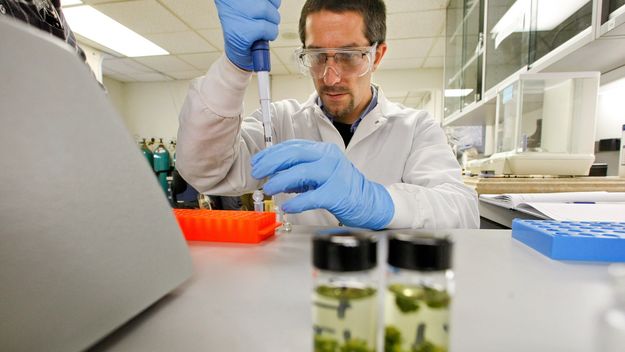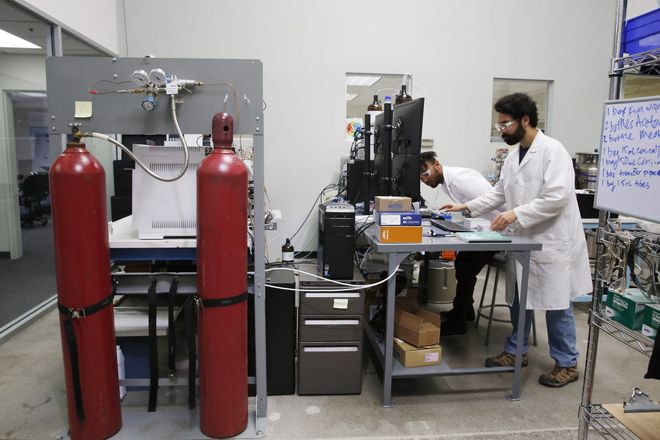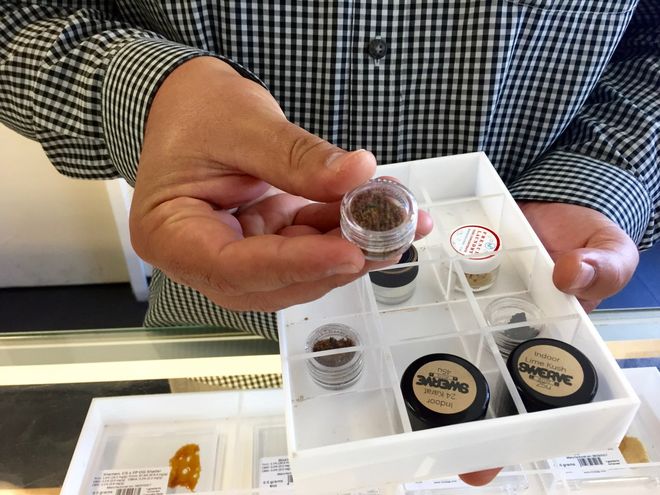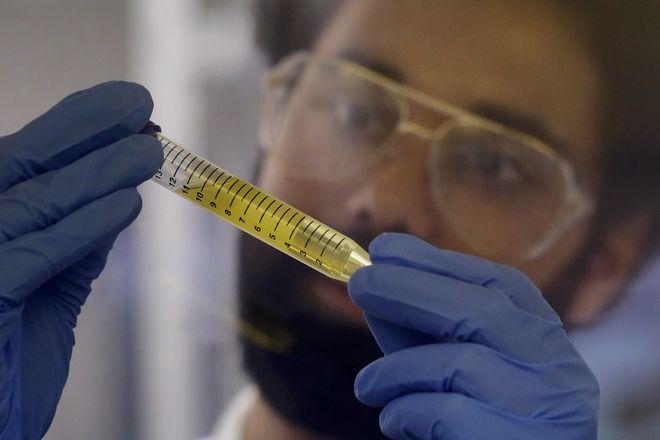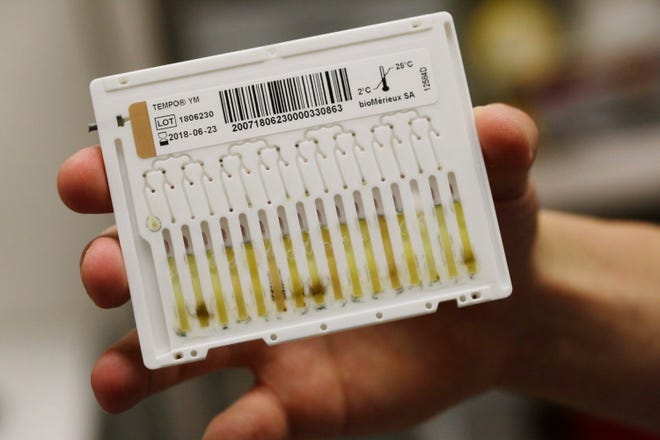In the land of the organic and artisanal, one might expect that California’s cannabis would be as high-quality as an organic tomato. In fact, multiple lab studies show that most of the state’s weed contains pesticides or bacteria, because the 21 year-old medical marijuana market has never been regulated at the state level.
A reckoning is coming in 2018, when state regulations on medical and recreational cannabis take effect — mandating all pot products get lab-screened before they hit retail store shelves.
But in the crunchy Bay Area hippie bastion of Berkeley, Calif. the reckoning has already happened. Berkeley has been at the forefront of cannabis quality assurance, and their struggles provide a glimpse into what’s coming for the entire state.
Since 2015, Berkeley’s three licensed, operating dispensaries have had to comply with some of the most strict cannabis contaminant regulations in the state, including thresholds for pesticides, solvents, mold, and mildew. It wasn’t easy. Today, most California cannabis is deemed too dirty to sell to patients in Berkeley, and regulatory costs have soared. But Berkeley’s industry has thrived nonetheless.
Back behind a long, L-shaped glass counter inside leading dispensary Berkeley Patients Group, hundreds of products — concentrates, edibles, and cannabis flowers with names like Purple Erkle, Double Dream, and Thin Mint Cookies — sit on shelves. The dispensary is packed with patients day and night, seven days a week, and does millions of dollars in business each year.
“Clones aren’t the problem,” says Victor Pinho, BPG’s Director of Marketing and Communications, pointing to young cannabis plant starters. “Where we get into the problem is over here,” he says, pulling out a tray of ‘shatter’ — a honey-like oil containing cannabis extract, from behind the glass counter.
According to Pinho, it’s the concentrates and fragrant flower buds that most often can’t be sold due to Berkeley’s testing standards. Pinho said up to 80 percent of wholesalers’ buds are rejected because they fail visual inspection. When Berkeley’s regulations went into effect in August 2015, the dispensary, in some cases, had to recall products from their shelves.
For example, the market for hash made by ice water agitation and sieving — so-called ‘bubble hash’ “fell apart,” Pinho said.
That’s because bubble hash is often the hot dog of cannabis products; it’s made from the leftover scraps, or “trim”, of cannabis flowers and it’s rarely stored in clean environments.
Berkeley’s regulations vs. Proposed California state regulations (cannabis flower)
| Contaminant | Berkeley limits | Proposed state limits |
|---|---|---|
| Pesticides | 0.1 ppm (total pesticide load) | 0.01-3.0 ppm (varies by type) |
| Microbes | Aerobic bacteria = less than 100,000 CFUs | Not listed |
| Microbes | Yeast = less than 10,000 CFUs | Not listed |
| Microbes | Mold = less than 10,000 CFUs | Mold = 0 CFUs |
| Microbes | Coliform bacteria = less than 1,000 CFUs | Not listed |
| Microbes | Pseudomonas = less than 1,000 CFUs | Not listed |
| Microbes | Salmonella = 0 CFU | Salmonella = 0 CFU |
| Residual solvent | 400 ppm (total solvents in extracts) | 1-2100 ppm (varies by type) |
(ppm – parts per million; CFUs – colony-forming units)
Trim often ends up on the floor, exposed to animal hair, handled without gloves, or processed on dirty equipment, according to Emily Richardson, Vice President of Business Development for CW Analytical, a cannabis testing lab based in Oakland, Calif. “Cannabis flower is like a sponge,” she said; it can absorb a host of contaminants. Processing the flower into concentrate only intensifies the impurities.
The hash market, however, recovered in a few months, after manufacturers began heating the hash in ovens and pressure cookers before processing, which changed its texture, but killed off any bacterial contaminants.
“Stringent regulations made it insanely difficult for bubble hash producers to pass Berkeley’s tests. A lot of producers cared. They were concerned their products were so dirty. But, a lot of producers just sold their products elsewhere,” said Richardson.
Beyond finding enough clean supplies to keep up with patient demand, regulatory costs have crept up and up in Berkeley. Lab testing bills at BPG currently total over $100,000 per year. The dispensary doesn’t publish its revenue numbers, but the price of regulation testing was “a significant amount that from one day to the next was just there,” Pinho said.
“We’re dealing with regulations that have been compounded over time. Now, we’re starting to see a disadvantage for us. It’s costly. These regulations make us less competitive,” Pinho said.
According to state projections, state lab testing regulations would add $407 to the cost of every wholesale pound; and prices for wholesale pounds range from $2,000 for top-quality flower buds to $400 for bottom-shelf trim. By this time next year, quality assurance could become one of the industry’s biggest costs.
Although it comes at a cost, Berkeley can offer some of the state’s cleanest cannabis. That’s not true across the rest of the state. In a recent report from Steep Hill cannabis testing lab, 93 percent of marijuana samples from southern California dispensaries were contaminated with pesticides, at levels that would fail the legal threshold in other states. Pesticides — along with microbial, and residual solvents — do pose a health risk to cannabis users.
“Berkeley isn’t over-regulating,” said Berkeley Cannabis Commissioner David Lampach, and founder of Steep Hill. “I don’t see why there’s an issue with protecting people. Why is that a burden?”
Most cannabis fails testing due to pesticide contamination, and a 2013 study in Southern California found that up to 69.5% of pesticide residues can be inhaled through smoking cannabis.
“An alarmingly large amount [of pesticides] survived the burning process, going directly into the bloodstream,” said Jeff Raber, an author on the study and founder of the Werc Shop, a Southern California cannabis testing laboratory.
“We don’t know what the problems of smoking cannabis may be,” said Raber, and inhalable products add “another layer of complexity” to regulations.
For the past two years, an inconvenient truth has been that medical marijuana deemed too dirty for Berkeley dispensaries could still be legally sold down the road in Oakland or elsewhere in the state. Those days are ending.
On June 27th, Governor Jerry Brown signed into law Senate Bill No. 94, a unified regulatory framework that addresses both medical and recreational cannabis. Under SB 94, dispensaries and cannabis cultivators will be subject to state regulations, and specific thresholds for quality assurance are being crafted this August.
Draft rules indicate California could have some of the strictest contamination limits in the country — a de facto organic standard that promises to severely strain the entire supply chain; at least at the beginning.
But even under current rigid regulations, Berkeley’s dispensaries are doing just fine.
“The initial set of regulations sent shockwaves through the industry. . . At first it was chaos. There was fear and frustration. But, vendors got used to it. Dispensaries got used to it. And you know what? Berkeley’s market is thriving,” said Richardson.
Jackie Flynn is the Stanford Rebele Intern for the San Francisco Chronicle’s cannabis media startup, GreenState.
